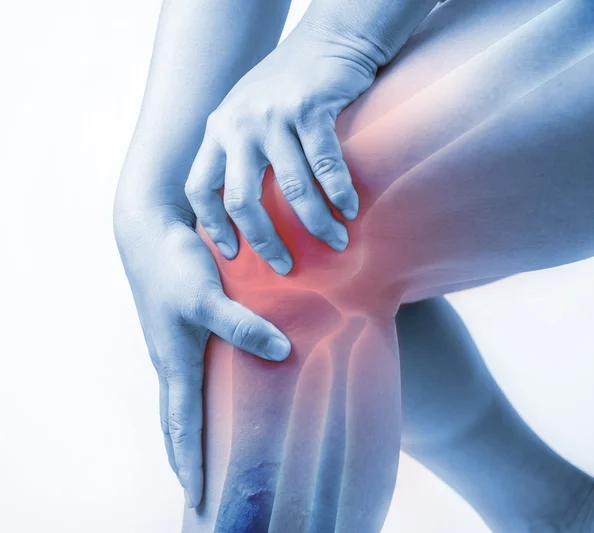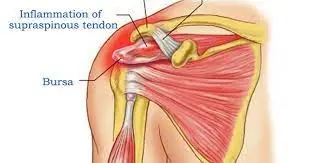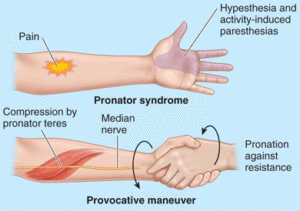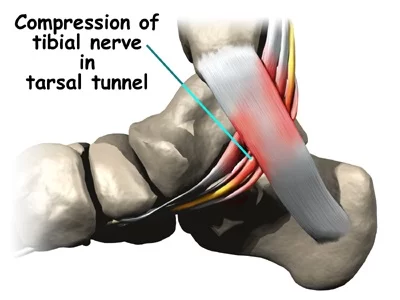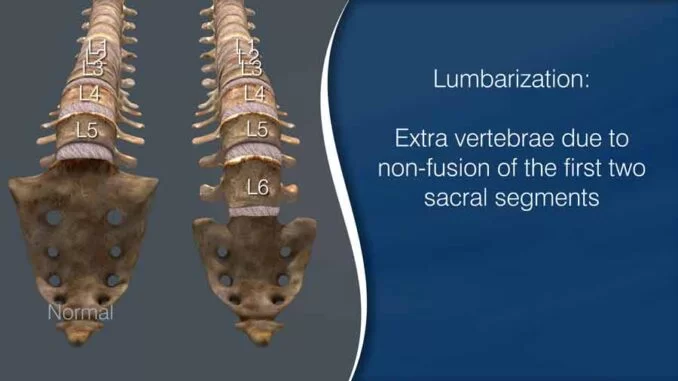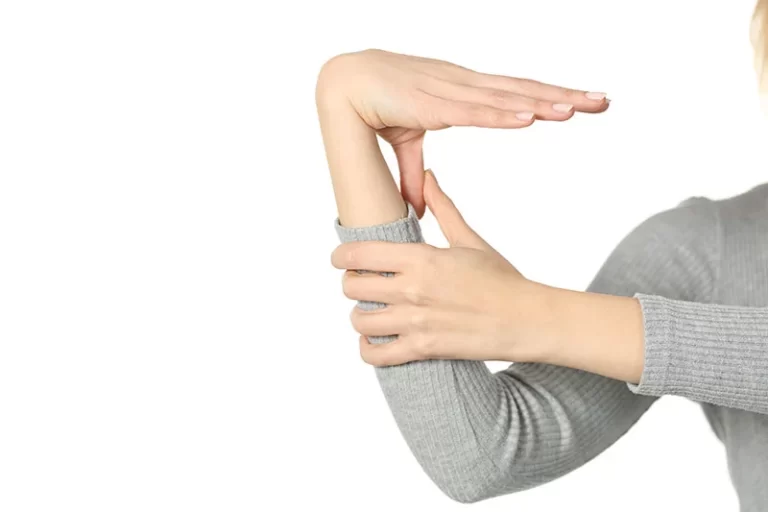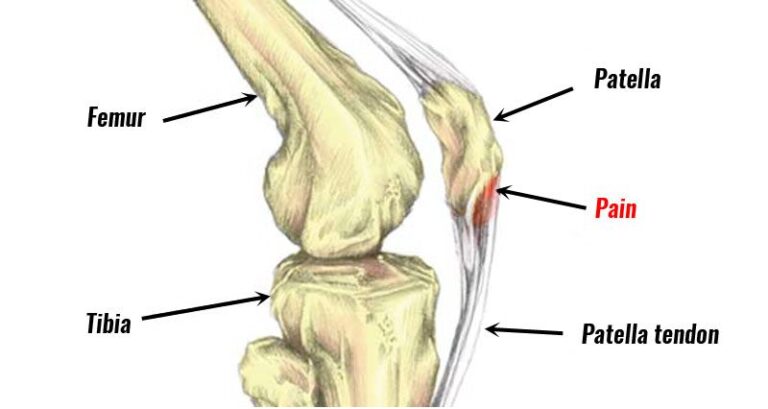Sharp Stabbing Pain in the Knee Comes and Goes
Table of Contents
What is a Sharp Stabbing Pain in the Knee Comes and Goes?
The knee is a complex structure that can cause a variety of pains, depending on the movement being performed or the affected structure.
The knee joint is one of the common regions where sharp stabbing pain comes and goes. It is a very common cause that makes a person to go the hospital. The knee is the biggest joint that has the responsibility of carrying most of the body weight; therefore, any damage or inflammation causes severe pain.
Sharp, stabbing knee pain is mostly short-term and goes away, but if it remains persistent, the reason may be a disease.
If you have ever experienced sharp, stabbing knee pain, you know how uncomfortable it can be. This kind of pain can interfere with daily tasks and make it uncomfortable to stand, sit, or even move. While the pain may be due to a bone fracture, several other less obvious factors may be responsible for intermittent knee pain and any other associated symptoms.
It is important to understand the potential reasons for sharp-stabbing knee pain so a person can get a proper diagnosis and treatment to reduce the pain and improve knee function.
Patients of various ages complain of shooting pain in the knee, which is frequently the consequence of a persistent medical condition or knee injury. Over 15 million Americans, according to the Centers for Disease Control and Prevention, have arthritis, which can lead to knee pain.
According to the National Library of Medicine, individuals of all ages and lifestyles frequently experience acute shooting pain in the knee when at rest. Some people get intermittent sharp stabbing pains in their knees. Some people still feel piercing aches when they’re at rest.
Depending on what’s causing the discomfort, the American Academy of Orthopaedic Surgeons suggests physical therapy, exercise, and surgery.
The goal of Health Report Live is to provide seniors with the knowledge they need to have knees that are happy and healthy. From the fundamentals of knee pain to treatments that you and your doctor may begin right now.
Anatomy of the Knee:
The human knee joint is the biggest and most intricate joint in the body. Determining the cause of your knee pain requires an understanding of its anatomy.
The knee consists of four main bones. The femur is the upper leg bone, and the patella is the kneecap on the front of the knee.
The integrity of the knee ligaments is crucial to knee health. The cushions made of cartilage that are present in the knee joint are called menisci. Walking or standing might cause persistent knee discomfort if these cushions become worn down.
The sides, front, and back of the knee all have ligaments. These ligaments give support and stability to the knee. In order to heal damage to these ligaments, which frequently calls for surgery and rehabilitation exercises, chronic pain may result.
What is Knee Pain?
An injury like a torn cartilage or burst ligament may be the cause of intermittent, sharp stabbing pain in the knee. Additionally, aging and medical disorders, including arthritis, gout, and infections, can cause knee pain.
Anterior cruciate ligament injuries, problems with the alignment of the thigh bones, and disorders such as bursae or sacs can also result in knee discomfort.
Knee pain is common in seniors, although it usually goes away fast. Some, though, have long-term illnesses and other trauma-related reasons. These may result in increased pain and indicate a shinbone, femur, or other injury or illness, such as tendinitis or a baker’s cyst.
The majority of mild cases of knee pain can be treated at home with home remedies, physical therapy, and self-care. However, in many cases, particularly when acute stabbing pain in the knee occurs intermittently, more extensive treatment alternatives, such as surgery, can be required.
Causes of Sharp Stabbing Pain in the Knee Comes and Goes
The complicated anatomy of the knee might result in a range of pains based on the movement being done and the affected area.
Burning pain in the knee may be caused by inflammation of the soft tissues in the knee.
One of the most common causes of burning pain in the knee is inflammation of the soft tissues that support the joint. Wear and tear on the muscles and the knee’s connective tissue (knee cartilage, ligaments, tendons, etc.) can result in knee discomfort.
The National Library of Medicine states that knee shooting pain is a sporadic condition. Some people have pain for a few hours to a few days around the patella, while others have pain for a longer period of time.
It is easy to wake up one day with no problems and the next find yourself with excruciating pain in your knees that interferes greatly with your everyday activities.
Knee pain can come and go. Excessive activity or medical disorders such as chondromalacia or collateral ligament damage might cause this.
Knee discomfort is frequently caused by a little irritation to the tibial tubercle, which subsides when the knee heals.
Knee pain may flare up and go as a result of reoccurring physical injuries or deteriorating medical issues.
The knee takes a great deal of responsibility because it facilitates your daily activities and movement. This busy joint, which serves as a cushion for the lower limbs and allows you to bend your legs, is prone to wear and strain due to its anatomical nature. The knee is made up of several hard and soft tissues, so any abnormalities in these structures can result in excruciating knee pain.
Burning sensations paired with knee pain can seriously hamper you and interfere with your day-to-day activities. Knee-burning pain can be the manifestation of several conditions ranging from gouty arthritis to nerve abnormalities.
Patellofemoral Joint Pain
The patellofemoral joint (the surfaces present between the underside of the kneecap and thigh bone) can be caused by inflammation of the joint surfaces, wear and tear, or any changes to the cartilage. Conditions such as Runners Knee, Chondromalacia Patella, and Patella Alta are the three most common causes of patellofemoral joint pain.
All three conditions will likely cause sharp, stabbing pain at the front of the knee with activities such as climbing stairs, running, or squatting. This pain is often not present at rest and returns with activity.
Hoffa’s Fat Pad Impingement:
Hoffa’s Fat Pad Impingement is a condition of inflammation of the fat pad that occurs at the front of the knee that sits below the kneecap. The fat pad is a fatty tissue bundle that has extensive blood vascular and nerve innervation. If this structure becomes overloaded or more weight is shifted on it, it swells and can be pinched by the patella.
When this occurs, it causes a sharp and sudden episode of pain just below the patella. The symptoms may worsen if you kneel or stretch your knee excessively, especially when standing.
Inflammation or Irritation:
Sometimes, underlying medical conditions like rheumatoid arthritis, gout, or lupus may cause inflammation in the knee joint. Inflammation can also occur due to the irritation of the tendon or bursae in the knee, which may result in conditions like tendinitis and bursitis.
Typically, such inflammation may lead to pain, stiffness, and swelling in the knee joint, leading to a sharp stabbing pain that comes and goes.
Tears and Ruptures:
Acute injuries and recurrent stress can result in tears and ruptures in the knee. These injuries can result in intermittent discomfort, swelling, and instability in the knee joint and can damage the ligaments, tendons, or cartilage.
Compressed Nerve:
Another possibility for the intense stabbing pain in the knee is a neurological issue brought on by a compressed nerve. A compressed nerve that innervates the knee can cause sudden, intense pain in the knee. Additionally, it could result in weakness, tingling, or numbness in the limb.
Loose bodies in the Joint
Small broken-off pieces of cartilage floating in the joint are called loose bodies, and they can appear after an injury, normal wear and tear, or an underlying medical condition like osteoarthritis. These fragments move within the knee joint, causing pain on and off, stiffness, and reduced mobility when they get adhered.
Fracture:
A fracture in any bone can feel like a sharp, stabbing pain when the bone is weight-bearing or when pressure is applied. At rest, the pain is more likely to feel dull or be described as an ache. The smaller of the two shin bones, the fibula, is the most often fractured bone.
On the outside of the knee, a high fibula fracture may cause severe stabbing pain. A femoral condyle or tibial plateau fracture will cause severe, stabbing pain in the knee. Patellar fractures are less common and occur after trauma or direct impact on the kneecap.
Osgood-Schlatter Disease and Sinding Larsen Johansson
Both of these conditions are seen in adolescents primarily but can rarely affect adults. Osgood-Schlatter Disease affects the bony prominence on the top of the shin bone when the bone grows faster than the tendon can adapt. Leading to sharp pain with impact activities including running and jumping.
Sinding Larsen Johansson has a similar condition affecting the tip of the kneecap, where the quadriceps tendon attaches. Osgood-Schlatter’s disease symptoms are comparable, although they are felt on the knee in a different location.
Meniscus Tear
Your meniscus is a spongy type of cartilage that acts as a cushion and shock absorber while your thigh bone rests on top of your shin. Kneeling repeatedly or twisting your body can damage your meniscus. Although it can happen in the lateral meniscus as well, the medial meniscus is the most frequently injured area. A meniscal injury may result in knee pain, stiffness, edema, and trouble extending.
A large tear may cause the knee to lock or give way, as well as a distinct crunching or clicking sound. Pain might come on gradually, and it’s not unusual for someone to wake up and experience severe pain when walking or bending their knee.
Bursitis in the Knee
Another typical cause of sudden, intense knee pain is knee bursitis, which is brought on by deterioration in the knee joint’s cushioning. When bursitis increases, a person can experience sharp shooting pain in the musculoskeletal system, which subsides when inflammation settles back down.
Tendinopathy: Patellar Tendonitis
The inflammation of the patellar tendon, which joins the tibia (shin bone) to the kneecap (patella), is known as jumper’s knee or patellar tendonitis. Tendon tears may result from this illness if treatment is not received.
When flexing the knee, the cartilage on the underside of the kneecap rubs against the thigh bone, creating pain or a grinding feeling.
Patellar Chondromalacia
Chondromalacia patella, also referred to as “runner’s knee,” is a disorder that causes knee pain due to the softening of the patella’s (knee cap) inner cartilage. Athletes frequently get patellofemoral pain syndrome, which is typically the result of overuse injuries.
The knee joint’s supporting patellar tendon (patella tendon abruptions) is thought to be the cause of this discomfort.
The burning sensation in this condition is limited to one leg (unilateral) and is felt in the anterior region or front of the knee. Running knee is a condition that affects those who engage in strenuous exercises. Overuse and abnormal muscle balance can cause the kneecap to deteriorate and cause post-traumatic pressure fractures (PFPS).
Running knee refers to knee pain caused by PFPS (chondromalacia), which affects athletes and players. The majority of athletes report having searing pain in the front of their knees (as well as the knee cap).
Studies suggest that PFPS patients may have an underlying neuropathic abnormality, which could account for their burning knee discomfort.
Iliotibial Band Syndrome (ITBS)
It is one of the causes of stabbing pain in the knee. The condition known as iliotibial band syndrome is encountered when there is burning pain on the side of the knee, or the lateral aspect of the knee. Overuse disorders of the knee include ITBS and PFPS.
The iliotibial band tendon may become inflamed and swollen due to trauma or overuse, which may result in further nerve compression. One or both knees may be impacted.
This illness is easily recognized since one of its main symptoms is burning pain in the knee (lateral aspect). This is among the most prevalent ailments that result in a burning feeling in the knee.
The syndrome typically presents as knee discomfort in the lateral femoral epicondyle of the knee, along with a burning feeling. According to a 2020 study, conservative treatment may be useful in reducing knee discomfort that is particular to this area.
According to a study, athletes who experience physical stress develop this syndrome and frequently report experiencing scorching knee pain.
Ankle Fractures
A break in the tibia or femur, the upper or lower bones at the knee joint, or a damaged kneecap are examples of knee fractures. Falls, sports injuries, and auto accidents are among the causes of knee fractures.
Gout
Gout is a kind of arthritis in which crystals of uric acid accumulate in the joints, especially the knee, and cause discomfort.
- Obesity, diabetes, renal illness, and a family history of gout are risk factors for getting gout.
- High alcohol or animal protein consumption can also raise the chance of developing gout.
Infectious Arthritis
This illness, also known as septic arthritis, is brought on by an infection that originates in another body part and travels to the joint, in this case, the knee. Swelling, discomfort, chills, and fever are among the symptoms.
Osteoarthritis
Osteoarthritis is a common cause of sharp shooting pain in the knee while at rest. Elderly people experience knee arthritis more than younger ones. However, osteoarthritis may develop prematurely as a result of trauma or prolonged overuse of sports.
Arthritis and Knee Pain
Many conditions can cause knee discomfort, including arthritis, fractures, damaged cartilage, and bursitis of the knee. Due to the complexity of the knee joint, you need to be properly diagnosed and informed about the cause of your knee pain.
While knee pain when walking or standing still is often thought to be an indication of ageing, a medical practitioner may disagree. Along with providing symptomatic pain relief, an accurate prognosis and treatment plan considerably reduce the progression.
Numerous indications and symptoms can indicate arthritis in the knee, depending on the patient’s health status, weight, range of motion, and other characteristics, as well as the extent of deterioration.
When it comes to identification, one characteristic that makes arthritic knee pain easy to identify is intermittent, intense stabbing pain that seems more like stinging episodes. Over time, the discomfort progressively worsens and increases in frequency.
Different Types of Arthritis Knee Pain
The physicians divide knee pain into two categories:
- Mechanical pain
- Inflammatory pain
1. Mechanical Pain
This kind of stabbing knee pain subsides after a little period of rest and occurs after exercises like weightlifting, squatting, or even ascending stairs. When the joint is stressed, the pain gets worse. To return to normal, however, it requires a few minutes of sufficient rest and mild movement.
2. Inflammatory Pain
Warmth, swelling, and burning sensations are some of the signs seen in this category. It shows as an intense flare-up episode with continuous mechanical pain.
Rheumatoid Arthritis:
Individuals with the autoimmune disease rheumatoid arthritis may also burning knee pain.
Acute trauma and tearing as a potential cause of intermittent intense stabbing pain in the knee
Burning knee pain may have a penetrating cause, such as a knee injury. The cartilage in the knee joint can be severely impacted by blunt force trauma, and the knee bones can leave behind damaged cartilage.
Cartilage Tear:
Another possible cause of burning knee pain is a torn piece of cartilage. Sports injuries or trauma are two potential sources of cartilage degradation, which can lead to knee pain.
Ligament Tears:
These tears are frequently the source of pain in the body. A torn meniscus or a torn ligament might significantly interfere with your daily activities. Pain on the side of the knee may be caused by a lateral meniscus tear or a lateral collateral ligament tear.
Overuse or Strain
Intermittent knee discomfort is often caused by overuse or strain, particularly in athletes, those who are physically active in general, and people who work in physically demanding jobs.
The repeated stress on the knee joint from these activities can lead to swelling and discomfort, which may come and go over time.
Peripheral Artery Disease
Narrowing of the arteries in the limbs is a condition that may trigger pain in the leg and the knee region. It’s referred to as peripheral artery disease.
Resting pain and even gangrene in the legs might result from reduced blood flow to the extremities.
Cysts:
A fluid-filled cyst may be the cause of your burning knee pain. According to studies, baker’s cyst frequently causes posterior knee discomfort or pain at the rear of the knee.
It’s located in the area behind the knee and is also referred to as the popliteal cyst. When the patient bends or extends their knee, the burning discomfort in their knee caused by the baker’s cyst gets worse.
Symptoms of Sharp Stabbing Pain in the Knee Comes and Goes
When shooting, incapacitating pain shoots down the shin and throughout the knee, and most individuals should visit a doctor. Swelling, stiffness, redness, weakness, instability, and crunching sounds, including popping sensations, are typical signs of knee discomfort.
Make an appointment with a doctor if your knee discomfort gets worse or lasts for a few days. It is also advisable to see your physician if you have severe knee swelling, are unable to walk normally, feel unstable when walking, or have persistent knee discomfort that interferes with your daily activities.
Another indication that you should visit a doctor for your knee discomfort is if remedies you try at home don’t help.
Diagnosis:
As previously stated, it’s critical to visit your doctor in order to receive a proper diagnosis. To ascertain the cause, your doctor will examine your knee.
Your doctor will undertake a physical exam and ask about your medical history to assist with establishing a diagnosis.
They could also inquire about your symptoms from you. Possible inquiries are:
- For what duration has the burning sensation in your knee remained?
- Is one knee burning, or are both knees burning?
- What other symptoms do you have?
- Have you ever sustained a knee injury?
- Does anything make the feeling better or worse?
To verify a diagnosis or rule out other reasons, your doctor could prescribe testing. Tests could consist of:
- X-ray
- MRI
- CT scan
- Blood
- Biopsy
Complications:
If left untreated, a burning feeling in the knee may result in consequences like:
- Joint deformity
- Nerve issues, which might result in tingling, numbness, or pain
- Irreversible loss of feeling
- Chronic or persistent discomfort
- If you feel a burning feeling in your knee, see a doctor to prevent further problems.
Treatment of Sharp Stabbing Pain in the Knee Comes and Goes
Handling knee pain can aid in the self-healing of acute cases as well as provide relief for chronic cases.
Since many of the knee structures have inadequate blood supply, they may find it difficult to heal naturally. Our blood supply’s nutrients and oxygen are what aid in the healing of these structures.
It involves injecting a regenerative solution directly into these structures to offer the necessary elements for healing and repair.
Since the treatment is addressing the underlying cause of the issue, it is considered a long-term solution.
In most situations, the primary goals of the treatment are to lessen joint friction and ease discomfort.
Medical and Surgical treatment:
Sufficient rest and over-the-counter pain relievers (ibuprofen, etc.) can help manage overuse injuries. These techniques relieve the discomfort in the majority of minor cases.
To reduce knee pain and inflammation, you can also apply an ice pack (cold treatment).
Steroid Injections
Injections of cortisone, a type of steroid, are used to deliver immediate pain relief. When treating severe acute pain, local steroid injections are the recommended course of action. Within a few hours, these injections begin to function.
Arthroscopic Surgery:
Arthroscopy is the treatment of choice for severe cases. To make the patient more comfortable, many kinds of surgical treatments are carried out.
When loose cartilage is removed, most patients find that knee debridement is effective.
The surgeon may decide to smooth out damaged cartilage in the knee through a procedure called a chondroplasty. As a result, there is less friction between the knee joint and thigh bone.
Patients with severe arthritis who have significant joint degeneration are recommended to have a knee replacement procedure to relieve pain and discomfort.
Home treatment:
The standard suggestion for treating knee pain is to immobilize the knee for a period of 24 to 48 hours in order to facilitate healing and avert additional harm. Steer clear of shifting or applying pressure to the knee if at all possible.
Swimming and cycling are two low-impact exercises that the National Health Service suggests for those recovering from knee injuries. Other solutions for treating shooting knee pain at home are as follows:
- Applying heat packs to the knee
- Applying ice packs to the knee
- Over-the-counter pain relievers
- Physiotherapy
- Wear knee braces
Above is the medical advice when dealing with these types of pain at home.
It’s time to contact a doctor if none of the above therapies and at-home solutions work. Knee replacement surgery, knee injections, and laser therapy are among the alternatives for treating knee discomfort.
Physical therapy:
Regular knee exercise relieves long-term, chronic discomfort and frequently aids in the healing of your knee.
Following a period of recovery, treatment consists of muscle-strengthening exercises. To avoid difficulties, exercises are performed while wearing protective or supportive knee braces.
Additionally, strengthening the muscles surrounding the knee helps relieve strain on the joint, which in turn relieves you of the intense, stabbing pain.
Typical knee exercises to aid with knee discomfort include the following:

- Straight leg raises
- Knee extensions
- Calf stretch
- Hamstring stretch
- Toe raises

When it comes to strengthening your knee, the American Association of Retired Persons advises you to do only what you are able to do to avoid injuring yourself further or making your knee discomfort worse.
It is important to consult your physician or an orthopedic surgeon for a diagnosis if you are having knee discomfort and are looking for relief.
Even while it might seem hopeless, there are a number of over-the-counter treatments that might assist reduce severe knee pain. Whether your knee pain is acute or chronic, your doctor can assist in identifying and treating the problem’s underlying source.
Occupational therapy and massage therapy help relax the muscles and improve range of motion. Exercises that strengthen muscles can help relieve searing knee discomfort.
Enhancing blood flow and lowering muscle and soft tissue stress are two advantages of massaging the leg and knee.
An athlete experiencing sharp, burning pain in their knee.
Conclusion:
Many underlying disorders can result in a burning pain in the knee. Pain and burning feelings together are typically signs of nerve involvement. Patellofemoral pain syndrome (PFPS) and iliotibial band syndrome (ITBS), which induce burning knee pain in the front and side of the knee, respectively, are the main causes of this type of pain.
In addition to these overuse injuries, overuse or infection can lead to inflammation of the soft tissues (tendonitis, bursitis, etc.). Burning pain can result from blunt force trauma that tears the tendons, ligaments, and cartilage of the knee joint (patella and femur). Peripheral artery disease and arthritis (osteo, rheumatoid, and gouty) can break down the leg’s blood vessels and joints, resulting in pain and immobility. Another cause is a Baker’s cyst in the back of the knee. Healthcare professionals treat patients with rest, over-the-counter pain relievers, massage treatment, corticosteroid injections, ligament restoration, and, in more extreme situations, arthroscopic surgery. For individuals with advanced osteoarthritis, total knee replacement is the only treatment choice; for those with ligament tears, knee braces are part of the medical advice.
FAQs
How may knee discomfort be diagnosed differentially?
There is a wide differential that can include referred pain, osseous malignancy, tendinopathy, bursitis, synovial plica syndrome, and idiopathic anterior knee pain syndrome. Age is also important in ruling out or including certain diagnoses.
How does one treat burning knees?
Rest is typically advised for overuse injuries that result in a burning feeling in the knee. A patellar stabilizing knee brace could be helpful if you have patellar tracking problems. Over-the-counter drugs like aspirin and ibuprofen can help lessen inflammation if the area is irritated.
If knee pain develops, is it better to walk or rest?
It’s critical to manage severe pain if you have arthritis or a minor knee injury. Treating pain as soon as it arises is one strategy to help control it. Follow the “RICE” treatment (rest, ice, compression, and elevation) to reduce your knee discomfort. Put your knees aside and take a break if the pain.
How can knee pain be recovered from the quickest?
Use “RICE,” please. The acronym RICE represents elevation, compression, rest, and ice. It is beneficial for knee discomfort resulting from mild injuries or flare-ups of arthritis. Rest your knee, wrap it in ice to minimize swelling, wrap it in a compressive bandage, and keep it elevated. Remember how much you weigh.
Can someone with knee discomfort walk?
Walking: You can reduce your knee pain by walking for 30 minutes a day at a moderate pace. Pay attention to the surfaces you decide to walk on. It is definitely not appropriate to go barefoot on cobblestone streets, pebbled highways, or hard marble surfaces. The uneven surfaces can put more strain on your knee joints.

